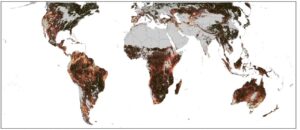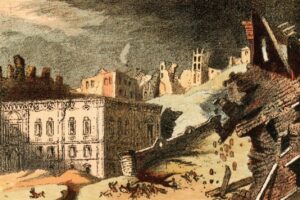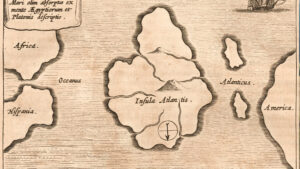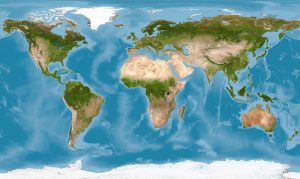There are 195 countries in the world and the vast majority of land is distributed among them. But because of complicated borders and geopolitical tensions, some lands remain unclaimed, their status vague and confusing.
Background
Terra Nullius is Latin for “nobody’s land.” It is an extension of the ancient Roman law Res Nullius, meaning “nobody’s thing.” While the latter referred to private property, historians believe that countries and empires used the former concept to legitimize their imperial ambitions. If the land was not settled or claimed, countries decided they could acquire the territory.
The rules for claiming terra nullius territory always remained vague.
Bir Tawil
In 2014, an obscure piece of land wedged between Egypt and Sudan made headlines when an American declared himself king. Why? So he could fulfill his daughter’s dream of becoming a princess. The man traveled to this spot in the desert to claim “the Kingdom of North Sudan.”
The area, called Bir Tawil, became problematic in the 19th century. From 1899 to 1902, Britain, Egypt, and Sudan negotiated the region’s borders. However, the new border created a triangular piece of land called the Halaib Triangle, which both Egypt and Sudan saw as theirs. In the 1990s, tensions increased when foreign organizations expressed interest in mining and drilling for natural resources in Bir Tawil.

Heaton and his flag in Bir Tawil. Photo: Facebook
Bir Tawil is the smallest piece of the triangle and is not claimed by either country. This has led to several attempts by individuals to claim the land. Bir Tawil has been declared a grand dukedom, an Arab republic, and even an empire.
The most famous case was in 2014 when American Jeremiah Heaton visited the area, stuck a flag in the ground, and declared it the Kingdom of North Sudan. Subsequently, he tried to acquire capital from the public to fund his newly formed micronation. Egypt and Sudan did not seem to care.
Unfortunately for Heaton, his royal dreams never materialized. No one recognized his claim, and he received backlash from anti-imperialists.
Marie Byrd Land
The UK, Australia, New Zealand, France, Chile, Argentina, and Norway have all claimed pieces of Antarctica, despite international law stating that the continent does not belong to anyone.
But none of those countries now claim Maria Byrd Land. Named after American explorer Robert Byrd’s wife, it spans over 1.6 million square kilometers.

Mary Byrd Land. Photo: Michael Studinger/NASA
Under President Franklin D. Roosevelt, American attempts to claim the land did not bear fruit. But this did not stop American businessman Travis McHenry. McHenry claimed part of Marie Byrd Land and supposedly founded his micronation. He called it Westarctica, a duchy with himself as Grand Duke.
McHenry claims that the 1959 Antarctica Treaty, which forbade countries from laying claim to land in Antarctica, has a loophole that allows him to establish his state. Though world governments do not take him seriously, Westarctica has an honorary consul in Spain, has a population of 2,000 (all outside Antarctica), and plans to launch a currency, according to Atlas Obscura.
Terra Nullius on the Croatia-Serbian border
When Yugoslavia broke up in the 1990s, Croatia and Serbia found themselves in a border dispute over four pockets of land along the Danube River. The most interesting pocket of Terra Nullius is Gornja Siga, a modest speck of forest near the river.
In 2015, politician Vít Jedlicka tried to set up a utopia there called Liberland. Plans for the state included using cryptocurrency and tax-free policies. His idea was contagious, and in 2019, an Australian politician founded the Free Republic of Verdis on a neighboring bit of land. It has an official website that outlines its laws, residency schemes, ministries, and more. You can become an e-resident if you wish.
“One of our largest goals is to accomplish international recognition from already recognized sovereign states such as Australia, the United Kingdom, Serbia, Croatia, and France,” the website states.
Past examples of Terra Nullius
Some past examples of Terra Nullius include Rockall (now under UK jurisdiction) and Erik the Red’s Land in Eastern Greenland. Rockall was a granite rock protruding from the North Atlantic and was Terra Nullius until 1955. It became part of UK territorial waters after the British Army planted a flag on it. In the 1970s, the Island of Rockall Act was passed to protect the territory in light of Irish claims to the rock.

Rockall in the North Atlantic. Photo: Encyclopedia Britannica
Norway claimed that Erik the Red’s Land was Terra Nullius before raising a flag at the Myggbukta station in July 1931. Denmark and Norway had been fighting over Greenland since the early 1990s and Denmark opposed this action, seeing it as a challenge to their sovereignty. Eventually, Norway revoked its claim after the Court of International Justice ruled it illegitimate.






